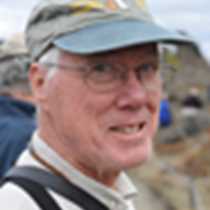A day in the ice of east of Svalbard
It was a day cast in shades of gray and white, with occasional highlights of blue in the ice. We awoke to the gray of dense morning fog all around us. Our ship’s radar showed the edge of the ice nearby, but we could not safely enter it until the fog abated. It did, and we did. We spent our day cruising through the sea ice.
The National Geographic Explorer is not an icebreaker. Those ships are designed to ride up over the ice and, by their weight, break through it. Our ship, in contrast, is designed and heavily reinforced to slice through the ice, pushing the broken floes aside. She cuts almost effortlessly through one-year old sea ice such as we are encountering. In so doing, she exposes the undersurface of the ice and the polar cod that reside there. Kittiwakes were taking full advantage of the feeding opportunity that was created by our passage and, in turn, pomarine jaegers (aka skuas) were stealing their meals from the kittiwakes.
Where there is sea ice there are seals, and where there are seals there are polar bears, but the fog was conspiring against us by restricting our vision. We pressed on, interrupting bouts of attentive gazing with presentations on wildlife photography and on polar exploration from Svalbard.
You can count on Lindblad Expeditions and the National Geographic Explorer to find a new way to experience our passage through the ice. The port side hydraulic door and platform were deployed so we could step out to watch the ice pass directly below us.
At last, after all that looking and waiting, the excited voice of our Captain came over the speakers: polar bears right in front of the ship! They were well worth the wait. A female bear and her two and a half year old cub, nearly as big as its mother but still respectfully subservient, approached us, gazed, sniffed, and then passed slowly down the starboard side of the ship. We rushed from bow to stern for superb views of the monarch of the northern ice. They examined us; we watched and photographed them. Apparently satisfied, they returned to their important task of hunting for seals, ambling off with a slow but steady energy-conserving gait. We wished them success and we, too, departed, heading for the north.




